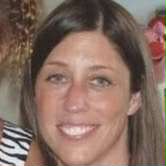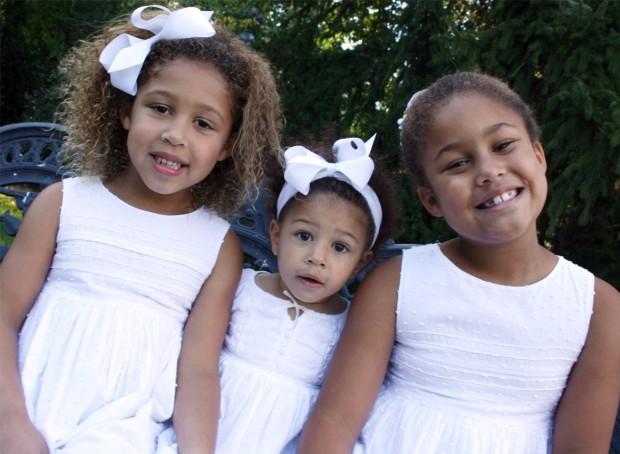
1974 - 2012
Christine Adewunmi
Summary
Name:
Years Active:
2012Birth:
September 25, 1974Status:
DeceasedClass:
MurdererVictims:
3Method:
ShootingDeath:
March 17, 2012Nationality:
USA
1974 - 2012
Christine Adewunmi
Summary: Murderer
Name:
Christine AdewunmiStatus:
DeceasedVictims:
3Method:
ShootingNationality:
USABirth:
September 25, 1974Death:
March 17, 2012Years Active:
2012bio
Christine Pannett Adewunmi was born in Missouri in 1974 and grew up in the St. Louis area. She graduated from Kirkwood High School and went on to build a life centered around her family and education. Christine worked as a physical education teacher at Parkway North High School from December 1998 to June 2006. Friends, neighbors, and family described her as an active, loving, and dedicated mother who prioritized her children above all else. She was well‑liked in her community, known for taking her daughters to the park, playing with them in the yard, and involving herself deeply in their daily activities.
Christine was married to Leonard Adewunmi, a property manager and real estate investor, and together they had three daughters: Lauren (born 2003), Samantha (born 2005), and Kate (born 2008). The family lived in a quiet neighborhood in west St. Louis County, Missouri. To outsiders, they appeared to be a happy and stable family. Neighbors recalled Christine as cheerful and engaged, and her children were well‑adjusted, attending Oak Brook Elementary School where they were active participants in school programs.
Privately, however, Christine struggled with serious mental health issues. In the months leading up to the murders, she was diagnosed with bipolar disorder and severe depression. According to her husband and family, Christine’s mental state had worsened in the weeks before the tragedy. She had been searching online for information about suicide and depression and had visited a therapist who referred her for hospital evaluation. On March 15, 2012 — two days before the killings — she was taken to Mercy Hospital by her husband for an assessment, and she reportedly planned to check herself into a treatment program the following day.
Christine had previously left home with her daughters twice without explanation, later lying about their whereabouts. On both occasions she eventually returned, but these incidents revealed a concerning pattern of instability.
murder story
On the morning of Friday, March 16, 2012, Christine’s husband, Leonard, left for work around 6:00 a.m. believing his wife and daughters were asleep at home. When he returned that evening, the house was empty. He attempted to reach Christine by phone more than 25 times, but she did not respond. Concerned for their safety, Leonard contacted police and filed a missing persons report, telling officers that his wife had been battling depression, was recently diagnosed with bipolar disorder, and that he feared she might attempt suicide. He also informed them of the previous incidents where she had left with the children without explanation.

Investigators searching the family’s home computer found numerous searches related to suicide methods and information about depression. These findings, along with Christine’s medical history and previous disappearances, heightened fears for the safety of the children.
The next day, around 1:00 p.m. on March 17, 2012, a guest at Blue Springs Ranch, a recreation area near the Meramec River in Crawford County, Missouri, discovered a horrifying scene. Christine’s SUV was parked at the dead end of a remote gravel road near the riverbank. Nearby lay the bodies of Christine and her three daughters — Lauren (8), Samantha (6), and Kate (3) — each shot in the head with a handgun. Investigators determined that Christine had fatally shot each of her children before turning the gun on herself.

The evidence left no doubt about what had occurred. Crawford County Sheriff Randy Martin publicly confirmed the conclusion: “We are confident this was a triple‑murder/suicide, with the mother doing the shooting.” The handgun was found near the bodies, and the location — isolated and away from populated areas — indicated that Christine had planned the act deliberately.
The motive behind the killings remains deeply tragic and complex. Experts in forensic psychology note that while murder‑suicides are far more frequently committed by men, cases in which mothers kill their children before taking their own lives tend to involve distorted perceptions of protection. Alan Berman, director of the American Association of Suicidology, explained that such perpetrators often believe they are saving their children from future suffering or that they must remain together even in death. “Her children need to be under her wing even in her death,” Berman noted. “It’s a horrendous loss of life for the children, but in her mind, she believes, ‘They need to be with me.’”
The Adewunmi family’s devastation was compounded by the lack of warning signs visible to outsiders. Neighbors reported no indication of serious problems. Christine’s family released a statement expressing their shock and sorrow, emphasizing that “no one knew the depths of her problem” and that they were “dealing with this tragic loss one minute at a time.”
In the aftermath, the St. Louis community was left reeling. Oak Brook Elementary School, where Lauren and Samantha were students and Kate participated in a parent‑child program, arranged counseling services for students, staff, and parents following spring break. Leonard Adewunmi, described by relatives as a loving and devoted father, publicly mourned the loss of his daughters, saying he would “miss cooking with Lauren, playing soccer with Sammi, and singing to Kate.”
The Adewunmi case remains one of the most disturbing and heartbreaking murder‑suicides in Missouri’s history, illustrating the devastating consequences of untreated or poorly managed mental illness. It also sparked renewed conversations around maternal mental health, suicide prevention, and the importance of early intervention for individuals exhibiting suicidal ideation — especially parents and caregivers responsible for children.